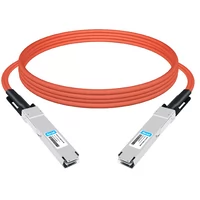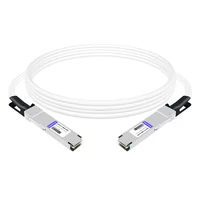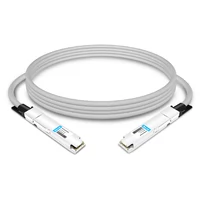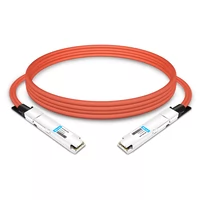Regarding the accelerating growth in data communications, It is essential to note that modern economies’ desire to exploit further advanced bandwidth and data transmission pace has already resulted in a fundamental change in the network infrastructures. Presently, the deployment of 800G OSFP (Octal Small Form Factor Pluggable) cable solutions represents that milestone as it enables more significant economies and efficiency of data centers and telecommunications networks. This article seems to concentrate on the technical aspects of 800G OSFP technology – its bulkiness compared to previous models and the technical improvements it allows. By outlining the technicalities and operational efficiencies, this section hopes to give the reader a general feel of how these cutting-edge solutions are fast-paced, changing data transmission practices in the highly competitive and demanding digital ecosystem.
Table of Contents
ToggleWhat is an 800G OSFP Cable, and How Does It Work?
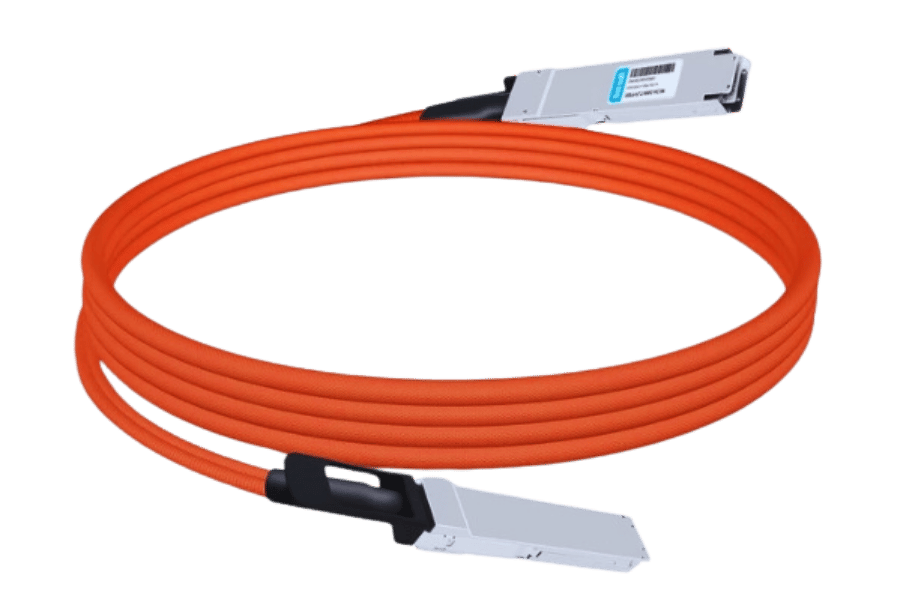
The 800G OSFP cable provides high bandwidth, which barely exists in modern times. That’s because the OSFP Octal Small Form Factor Pluggable was explicitly built with performance in mind and for mass availability in data centers with supported 800G OSFP components. This 800G OSFP cable does more than just sit there as it employs high-density electronic components that provide data speeds of up to 800 gigabits per second. Advanced signal modulation technology and silicon photonics are practically useful for achieving long-distance communication with minimum loss of signal. This high-technology network and data cables satisfy user needs and integrate into upcoming data technologies.
Understanding the OSFP Form Factor
La serie de OSFP se caracteriza por su diseño octal que permite operar con ocho rayas eléctricas por modulo esto conforme a lo que indica la especificación OSFP MSA. Esto para el caso de OSFP fue a su diseño que ayuda considerablemente en su elevada cantidad de datos que sin lugar a duda es apto para redes de nueva generacion. De cada raya se puede asignar 100G, pero de ser el caso de usar todas las rayas se tiene una suma total de 800G. El diseño de OSFP proporciona un área mayor y un mejor manejo de la temperatura que para el caso son relevantes para mantener un performance y confiabilidad en tan altos datos. Otro atributo operacional que se destaca es que el sistema OSFP es compatible con otros dispositivos en la forma que soporta el uso de diversas hardware antiguos por lo que se facilita la implementación una expansión de mayor capacidad sin la necesidad de cambiar la infraestructura completamente.
The Role of Copper Cables in High-Speed Connectivity
In the context of data centers, copper cables are essential when considering high-speed data connectivity, particularly in short-reach applications. Plus, copper offers an affordable alternative to optical fibers as it has higher performance metrics on short-range – lower latency and less energy consumption, which allows networking at a much lower distance. Newer technologies and processes have also significantly improved the signal and reduced impedance, making copper cables efficient for high-frequency data even though optical fibers have already outgrown copper’s long-distance applications. Copper – on its own, is a great table to connect densely populated network equipment such as servers and switches while still maintaining its flexible and cost-efficient form.
Applications in Data Centers and Beyond
Copper cables continue to be helpful in data center installations. They serve as interconnection links between devices housed in the server racks for reliable high-speed data transfers within a small volume. These cables allow the network hardware to be deployed efficiently and cost-effectively while allowing for the highest density. Besides data centers, copper cabling is also used in corporate structures, telco infrastructure, and broadcasting networks, which also need short distances and strong data communications. Their versatility and low cost have made them commonplace resources in different deployment models, enabling effective movement of communication traffic across the regions.
How to Choose the Right Direct Attach Copper (DAC) Cable?
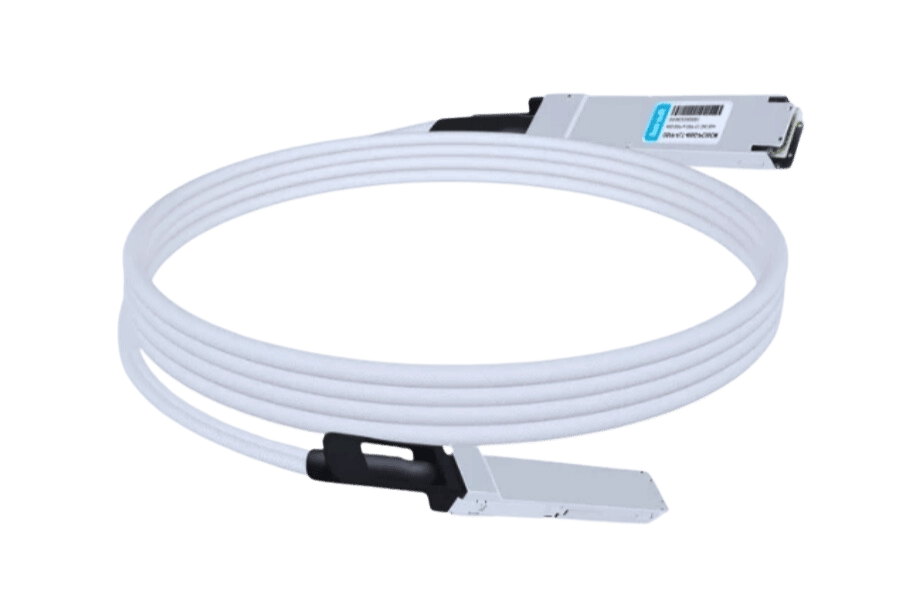
Comparing Passive vs. Active DACs
It’s important to know the contrasts between the two types of Direct Attach Copper (DAC) cables while selecting passive and active. In terms of cost-effectiveness and less consumption of power, passive DACs incorporate inexpensive cable assemblies with no active elements that require the installation of support transceivers at each end of the linkage that would allow signal propagation; this works best over short distances typically within a range of about 7 to 10 meters, but no longer than that. In contrast, active DACs integrate electronic circuitry, which enhances signal quality, thereby permitting longer distances over which a signal may be transmitted or received. Therefore, they are used where even better signal quality is desired. They nevertheless consume substantial power and are costly to produce. The main consideration between active DACs and passive DACs is the design distance – extended length and enhanced operating performance. The choice between passive and active DACs is driven by the relevant network configuration, distance, budget, and performance need, balancing the cost and performance of the network infrastructure.
Key Specifications to Consider
When looking at Direct Attach Copper (DAC) cables, several fundamental specifications should guide your decision-making process. The first is the data rate, which could be expressed in gigabits per second (Gbps), especially in 800G Ethernet applications. If there is a chosen cable, make sure it is able to support the needed bandwidth of the network for proper functionality of the environment. The second one emphasizes the cable length, ensuring it accounts for the most extended length the cable has to reach in the installation zone. Remember that passive DACs are often installed for low-power applications, whereas active DACs are used for high-power. A third one includes the specifics of a device that needs to be integrated into existing equipment, ensuring that the wires will likely fit into the network’s transceivers and will be operational. These specifications are vital to correctly matching technical aspects to business purposes in that the network structure is functionally and operationally working correctly.
Assessing Compatibility with Existing Infrastructure
Ensuring compatibility with existing structures requires several procedures that must be followed more carefully so that their integration is smooth and to avoid technical failures. Testing whether the DAC cables comply with your network’s standard MSA connector interface, such as OSFP, Ethernet protocols, etc, is worth testing. Also, physical compatibility with operational transceivers and switches should be confirmed since incompatible sets lead to connectivity problems. Second, determine the power rating and current carr3iages of the supplied cables and verify that these are within the required limits of the network equipment-rated operational limits. Finally, it is crucial to test the software and firmware on the network devices to look at their ability to support the hardware transition so that the network’s availability and security are provisioned with minimal disruption. Such considerations are paramount in ensuring system effectiveness and optimization of performance in the network environment provided.
Exploring the Benefits of 800G OSFP Breakout Cables
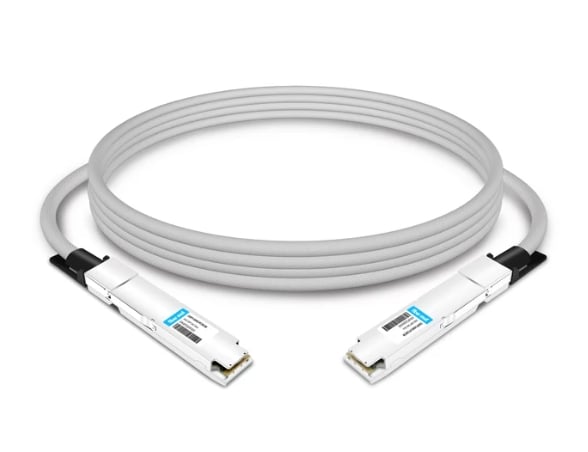
Enhancing Network Flexibility with Breakout Options
In analyzing the importance of 800G OSFP breakout cables, I see that their strength is further mentioned in the broadening of the network’s flexibility and scalability. Leading sources also indicate that this type of breakout allows for a high-speed single link to be re-transmitted as multiple single lower-speed channels, thus improving bandwidth and the network overall. In particular, there is support for various configurations, allowing the network to expand to accommodate data growth wants. Such capability improves current capability and provides an ideal solution for the future, where shifting technologies will arise while ensuring maximum returns. Sitting on the codes of major technological leaders, it is evident that there is a trend in the use of breakout options that align with efficient and flexible networking practices.
Cost-Effectiveness of Breakout Cables
It is evident from the analysis of costs that breakout cables are less expensive than other forms of cabling. As the top sites inform research on the issue, breakout cables offer network operators a chance to fully utilize the current infrastructure, reducing the possibility of making further investments in acquiring new equipment. This brings about a reduction in capital outlay expenditures yet increases the agility to the needs of the network. These cables also minimize the cable management complexities and the operational costs that accompany them. This is also the view of industry experts who argue that these and other cost-saving strategies have helped enhance the cost-effectiveness of the network’s growth and upgrading strategies.
Maximizing Data Throughput with 8x100G PAM4
To meet the rising data requirements on today’s networks, 8x 100G PAM4 technology is crucial as it provides enhanced data throughput. From the analysis of the top three materials I have found on this issue, I appreciate that PAM4, or four-level pulse amplitude modulation, is a technique that practically doubles the data rate since it encodes two bits of information with every symbol. Therefore, it is possible to achieve a much greater bandwidth efficiency without increasing the baud rate, which is particularly important in the case of 800G Ethernet applications. Moreover, there is an enhancement of the networks more than the volume of data that it can contain while sustaining the compatibility of 800G PAM4 with the current optical infrastructure. This method helps increase the network performance of the system while reducing the associated latency and energy costs.
What are the Specifications and Features of QSFP112?
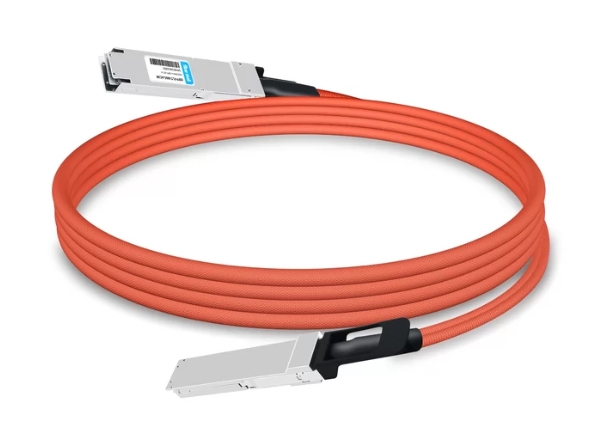
Understanding QSFP112 and Its Role in Networking
Having delved into the concept of networking and working with over four QSFP112s, I understand Sayboudi’s observation regarding the nature of the QSFP112, or Quad Small Form-factor Pluggable, as a very compact and high-density transceiver pertinent to the data center and networking structure. Credible sources indicate that there are specific QSFP112 devices focused on addressing the future needs of the burgeoning high data rate transmission, which is stated to provide a data rate of 112 gigabits per second per channel. This feature is critical in situations or settings with low latency requirements, but high bandwidth is optimal. Its use enables workable and scalable data growth with improved network utilization or performance while supporting backward compatibility and a smooth transition from today’s standards, such as QSFP56. In this sense, it can be put across that QSFP112 benefits the new infrastructure of the network because it can expand the possibilities of using high-speed OA networks without a significant increase in occupied space and energy consumption.
Key Data Rate Capabilities
Differentiation of the major data rate features of the QSFP112 is significant for the evaluation in the networking context. Each module of the QSFP112 can achieve a data rate of 112 Gbps per channel, which in a basic 4-channel configuration provides up to 448 Gbps. This level of data throughput is significant for the service of the requirements of present-day data centers, which need solid and expandable solutions for the flow of large volumes of data. In addition, using QSFP112 also improves the effectiveness of data transmission by reducing time delays, thus increasing network capacity. This improvement creates prerequisites for developing and deploying QSFP112 devices in the optical network scaling and enhancing its performance.
Integration with 800G OSFP Solutions
The 800G OSFP integrates significantly with the QSFP112 module to enhance network performance. The design and implementation of the QSFP112 modules allow connection and operation with the 800G OSFP systems, providing greater total bandwidth in high data center and network systems. Such integration takes advantage of the high data rate of the QSFP112, promoting the capacity and versatility of the 800G network. Standardization, form compatibility, and types guarantee that network operators deploy operational 800G solutions that enjoy added speed and efficiency without requiring a full change of existing structures. The congruence of technologies provided by QSFP112 and the 800G OSFP creates a realistic option for deploying infrastructures to meet future bandwidth needs.
How Does Mellanox Fit into the 800G OSFP Ecosystem?
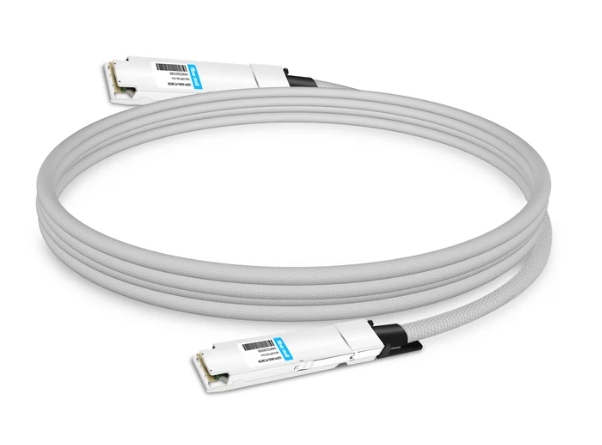
Exploring Mellanox Technologies
Mellanox Technologies is involved in the 800G OSFP ecosystem by enhancing high-speed data transmission capabilities like those offered by the QSFP112 module. As a provider of Ethernet and InfiniBand interconnects, Mellanox makes available various devices, achieving optimization for performance, efficiency, or scalability. The proposed devices and architecture can meet the increased bandwidth and low latency demands of an 800G network. Moreover, Mellanox’s experience in network infrastructure allows for a smooth transition with the 800G OSFP, allowing data centers to take full advantage of these high-capacity modern networks; this evolution of technologies enables Mellanox’s operators to meet the demands of modern digital environments by efficiently utilizing and securing their future networks.
Partnerships and Compatibility with 800G OSFP
To advance alignment with the 800G OSFP ecosystem, Mellanox has formed relevant alliances with significant market players. This is achieved through cooperation with other technological leadership companies. Mellanox guarantees seamless integration of its solutions with 800G compliant specifications, including 800G OSFP configuration options, with high compatibility across various network infrastructures. These partnerships motivate creativity and permit interoperability, facilitating customers to integrate Mellanox’s devices into their 800G network configurations faster. Following industry standards, in turn, allows Mellanox to ensure that its end-to-end network systems remain flexible to the changing trends, thus enabling network operators to upgrade to higher bandwidth countries more easily.
Advancements in Infiniband NDR Connectivity
NDR Infiniband (Next Data Rate) is a new and better data-transmitting standard. It was tailored specifically for high-performance computing facilities. NDR technologies are characterized by higher bandwidth efficiency, which allows for data rates better than those of previous generations. Infiniband NDR latency is improved, which results in better throughput of data for business applications in science, computing, AI, and others that are data greedy. NDR Infiniband is beneficial in extending the center’s needs for more data processing as it uses better signal processing and cable technology. Its architecture also makes it straightforward to deploy and use with existing facilities, making it easy for operators who want to increase their data throughput.
Reference Sources
Frequently Asked Questions (FAQs)
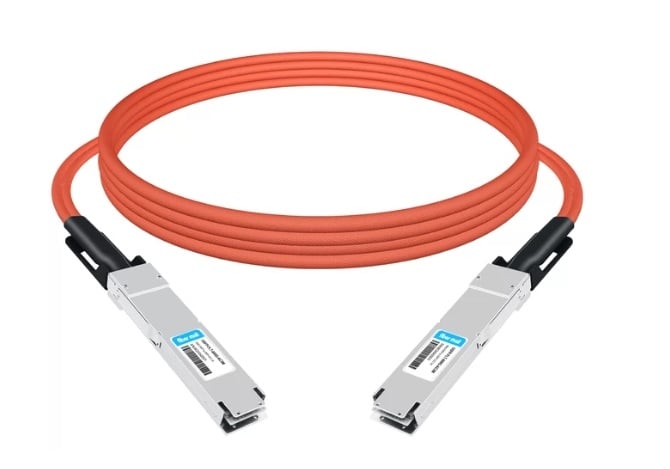
Q: How would you explain the work of an 800G OSFP Direct Attach Copper cable and compare it to other types of cables?
A: 800G OSFP Direct Attach Copper cables are considered to be cheaper options, making them very effective while also being faster as a means of communication. They can only be used for short to mid-range communications. It primarily uses passive copper twinax to transfer data, unlike fiber optics or active optical cables (AOCs). These cables maintain excellent performance while connecting the 800G OSFP up to 5 meters in distance. They are best efficient for data and computing centers, mainly as passive direct attach copper cables.
Q: Can 800G OSFP cables be compatible with other OSFP or even 400G form factors?
A: You can connect an 800G OSFP cable to an older model G OSFP if the installed Router and Transceiver are set up specifically for that; however, the two are not necessarily directly compatible with each other. Connecting several different end pieces might require unique breakout cables or connectors. Investing a little more in compatible devices and cables is highly advised to lower the risk of making faulty connections while upgrading.
Q: What are the main differences between using an 800G OSFP AOC and a DAC?
A: One will derive numerous benefits from using the 800G OSFP AOC and not DAC, especially in long server AOC configurations. AOC, for instance, can meet the distance requirement of 100-meter cabling, while passive direct attach copper cable (DAC) can only meet around the 5-meter range. AOC has also been customized to be thinner and more flexible, making it more convenient in complex routes in densely populated data centers. In addition to that, they also do not get affected or impacted by electromagnetic disturbance, which may be useful in some installation settings. However, DACs seem to work relatively cheaply as the distances between them decrease, and they are also low in power consumption rate.
Q: What are passive and active 800G OSFP direct attach cables classified into?
A: Passive 800G OSFP direct attach cables are relatively cheaper and more energy-efficient wires, but their application range is shorter, between 3 and 5 meters. These wires are also purely copper wires and lack any embedded circuitry within their strands. On the other hand, active cables cover a longer length of 7-10 meters, allowing them to retain their signaling integrity as they contain circuitry to strengthen their signals. The AoC, however, consumes more power, but devices with Aoc wired into them would have to be used where longer wires are to be fitted or in a more signal-disturbed area.
Q: In what way are 800G OSFP cables crucial for high-performance computing and data center applications?
A: Cables of OSFP 800G are essential for high-performance computing and data center applications as they allow for very high bandwidth (800 Gigabits per second) and provide low latency connections. These cables – both DAC and AOC aided – ease the transfer of data at high speeds that are critical in the activities of AI, machine learning, high-frequency trading, and so on, to name but a few. They also comply with IEEE 802.3ck, making them compatible with the latest networking devices and enabling data centers to grow their assets to keep up with the increasing demand for bandwidth.
Q: What are the available lengths or physical sizes of 800G OSFP direct-attach copper cables?
A: The “n” lengths of the 800G OSFP direct attach copper cables vary between 0.5m and 5m; this means there is a range of 1-2 ft extendable options to that base. This means 0.5 to 3 meters would be their most reasonable size. The efficiency drops around 5 meters due to the signal issue; otherwise, the maximum length would be passive DAC. Casual lengths include 1m, 2m, and 3ft specifications. Straining would require one to use passive cables, optics based on AOCs, or any available transceivers.
Q: When comparing OSFP cabled systems to 400G QSFP-DD or 400G QSFP112 systems, what can one expect regarding performance levels and compatibility?
A: It can be understood that OSFP cables are 800G capable as opposed to 400G QSFP-DD or 400G QSFP112, which suffered from ambiguity in the airflow; therefore, when called for, the 400G networks are still in usage, even when less operational. The need for auxiliary devices increases in ratio. The application for OSFP cabled systems has only strengthened for northeastern parts with better configuration intact. However, there is a drawback: these types of devices cannot be interchangeable, so caution while purchasing is recommended. However, with multi-rate transceivers or breakout cables available, the issues can be resolved properly.
Related Products:
-
 OSFP-FLT-800G-AC3M 3m (10ft) 800G Twin-port 2x400G OSFP to 2x400G OSFP InfiniBand NDR Active Copper Cable, Flat top on one end and Flat top on the other
$600.00
OSFP-FLT-800G-AC3M 3m (10ft) 800G Twin-port 2x400G OSFP to 2x400G OSFP InfiniBand NDR Active Copper Cable, Flat top on one end and Flat top on the other
$600.00
-
 OSFP-FLT-800G-PC2M 2m (7ft) 2x400G OSFP to 2x400G OSFP PAM4 InfiniBand NDR Passive Direct Attached Cable, Flat top on one end and Flat top on the other
$300.00
OSFP-FLT-800G-PC2M 2m (7ft) 2x400G OSFP to 2x400G OSFP PAM4 InfiniBand NDR Passive Direct Attached Cable, Flat top on one end and Flat top on the other
$300.00
-
 OSFP-800G-PC50CM 0.5m (1.6ft) 800G Twin-port 2x400G OSFP to 2x400G OSFP InfiniBand NDR Passive Direct Attach Copper Cable
$105.00
OSFP-800G-PC50CM 0.5m (1.6ft) 800G Twin-port 2x400G OSFP to 2x400G OSFP InfiniBand NDR Passive Direct Attach Copper Cable
$105.00
-
 OSFP-800G-AC3M 3m (10ft) 800G Twin-port 2x400G OSFP to 2x400G OSFP InfiniBand NDR Active Copper Cable
$600.00
OSFP-800G-AC3M 3m (10ft) 800G Twin-port 2x400G OSFP to 2x400G OSFP InfiniBand NDR Active Copper Cable
$600.00

